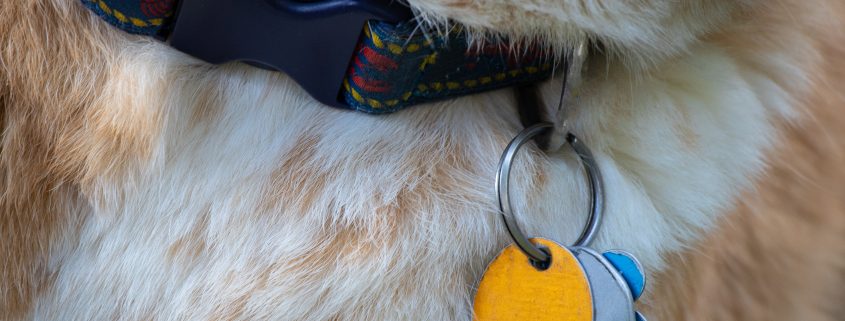It happens every day. Pets escape from the yard, slip out doors, break away on walks, or in some way go missing. If your pet is lost, you don’t want to have to rely on posters plastered around town or hope a shelter worker will have the time and resources to figure out where your pet belongs. Successful pet recovery heavily depends on the animal wearing identification; on average, 48% of dogs are reunited with their owners, while only 19% of cats are.
Given these statistics, it’s surprising that every pet isn’t microchipped, collared and tagged. But many owners mistakenly believe their pets aren’t at risk, either because they are indoor-only pets or because they play in a fenced-in yard. What pet parents fail to remember is that accidents happen. One way of protecting your pet is to always expect the unexpected.
Why Your Pet Needs Identification
There are steps you can take to find your lost pet, but part of being a responsible owner is ensuring your pet can be identified and returned to you if you ever get separated. In fact, it’s key that the person who finds your lost pet is able to get in touch with you as quickly and easily as possible. The harder it is for people to identify your pet, the less likely they will make it home. Making an ID tag and getting your pet microchipped are safety essentials. Read on for more information about these identification methods, how they work, and what they could cost you.
Tag — You’re It!
Every pet should wear some form of visible identification that helps anyone who finds your pet to see immediately that this animal belongs to someone. It also gives good samaritans a quick and easy way to contact you. An ID tag also guarantees that shelter workers can easily get in touch with you and reunite you with your pet. Many pet stores and big box stores offer a kiosk where you can get a metal ID tag engraved while you wait for about $10. If you don’t like the jingling of a metal tag, an alternative would be a durable collar with your pet’s information embroidered on it, although these types of collars can be pricey.
At the very least, a tag or embroidered collar should include your pet’s name and a current phone number where you can be reached. If space allows, you may also want to include:
- An alternate phone number (i.e home phone, a significant other, or a family member.)
- Your address
- Key information (i.e has a microchip, needs medication, is deaf, has allergies, etc.)
Mighty Microchips
For most pets, a microchip is a no-brainer. Tags and collars can wear away, break, or even fall off; but microchips are forever. Most humane organizations and veterinarians agree that a tiny microchip transponder — about the size of a grain of rice — is a permanent, reliable form of ID that will always remain with your pet. The most significant problem with microchips is that pet owners forget to update their contact information when they move or change their phone number. Approximately 27% of the nation’s dogs and 10% of its cats are currently microchipped, which increases the odds that those pets will find their way home if they ever go missing. Microchipping can be done quickly and painlessly at your veterinarian’s office or a shelter and on average will cost $25-$75 depending on the type of pet you are microchipping.
Your Pets are our Priority!
At the National Animal Supplement Council, our number one priority is to promote the health and wellbeing of your pets. That is why we created the NASC Audit Program and the Quality Seal, which helps you identify animal health and nutritional supplements that come from responsible suppliers committed to producing the highest quality, most consistent products available. Visit our website to learn more and to see a list of NASC members that have earned the Quality Seal.


